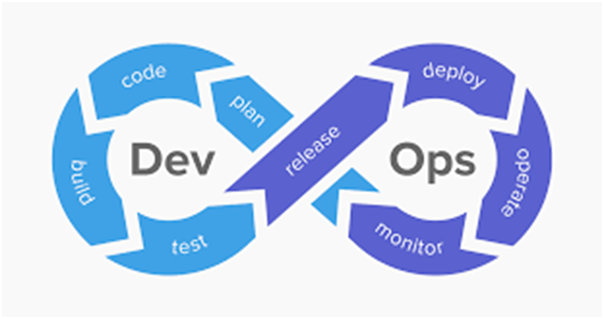With more and more companies embracing automation, the demand for integrating security into development operations have grown tremendously. According to a report, 56% of respondents consider DevSecOps as a must-have for automation tools. Sadly, most businesses think of implementing DevSecOps as adding new security tools and implementing security practices.

DevSecOps is much more than that. It should become an integral part of your organization culture, technology and processes. In order to succeed with DevSecOps implementation, you need to create a well thought out strategy. Even then, you might encounter some roadblocks along the way. The way you respond to those challenges will determine the outcome of your DevSecOps implementation.
In this article, you will learn about seven missteps you must avoid when adopting DevSecOps in your company.
7 Missteps To Avoid When Implementing DevSecOps in Your Organization
Here are seven missteps you should never take when implementing DevSecOps.
1. Multitasking
One of the biggest mistakes businesses make when implementing DevSecOps is they try to do too many things all at once. Experts suggest that you should take one small step at a time and start small and then take it from there. Instead of directly implementing DevSecOpsprocesses, it is highly recommended that you start a pilot project. This will help you develop a better understanding of the project and cross-functional teams.
Start off by setting goals and identifying use cases and think of ways to make continuous improvements in an iterative fashion. Once everything starts working according to the plan, now you can start documenting the implementation process and results. Make sure you focus on business value and return on investments otherwise, you will struggle to get top management support and involvement. Without the support, it will not be possible for you to implement DevSecOps in your organization.
2. Cultural Baggage
When DevSecOps was first introduced, it has three key pillars.
- Collaboration
- Empathy
- Innovation
That forced teams to focus more on these items and succeeded. Sadly, they struggled in tactical phases of the software development lifecycle such as development, testing and deployment. The reason was that they used to focus too much on the cultural aspects and ignored these key areas. The biggest obstacle in implementing DevSecOps is that development, security and operations teams have different goals.
For instance, the development team’s primary focus was on product development while the security team is responsible for minimizing the risks. This also resulted in some friction between those teams. That is why it is difficult to bring them on the same page. It is important for businesses to tie all the teams to a central objective which is to deliver high-quality software. Successful teams focus less on cultural aspects and more on executing tactical stages the right way.
3. Not Taking Full Advantages of Tools
As mentioned before, you should not jump all in too early as this move can backfire. If you fail to understand and fail to take full advantage of tools, your DevSecOps will hit roadblocks. Slowly introduce one security control at a time such as DDoS protection to evaluate whether you are getting the desired results or not. It is the duty of engineering teams to minimize false positives. Try to start security processes within the tools that your engineering team is currently working with. This will make the transition easier for them and also give you a better idea about how good or bad the security control performed.
4. Lack of Leadership Buy-In
There is a big difference between adding DevSecOps roles in the current team and processes and adopting DevSecOps and making it an integral part of your organization. Businesses need to understand this difference as soon as possible because both of these methods will yield completely different results. Your organization’s culture will play an important role in the success of your DevSecOps journey.
In most cases, the organization culture is derived from the mission and vision top management set for your organization. That is why it is imperative to get buy-in from top leadership. When they support your initiatives, it will be much easier for you to overcome hurdles along the way. Without their involvement, your DevSecOps journey will come to a grinding halt.
5. Ignoring Feedback
One of the biggest problems with older codebases is that you might have to deal with a lot of defects. Creating a ticket for every defect is not a feasible option. You need to constantly engage and collaborate with your teams in order to successfully implement DevSecOps in your company. Listen to the feedback and make changes in the light of the feedback. Sometimes, businesses tend to underestimate the time they need to implement new practices and end up with a tight deadline, which puts more pressure on team members.
6. Accepting Security Without integration
Businesses spend little to no time discussing the tool or process which is being implemented. As a result, these security changes get acceptance quickly without being properly integrated into the pipeline. It is important for the security and development team to sit together and address any security risks that might emerge due to software delivery. If the software delivery is introducing new risks, you need to fix them before making it go live. You don’t want a half baked software to get in the hands of users as it might contain a lot of bugs, errors and vulnerabilities.
7. Not Putting Security Findings To Test
Even if the security controls come under discussion, they usually get the pass over instead of being put to the real test. Let’s say, your security findings tell you about some loopholes and vulnerabilities but they are actually false positives but you spend resources on fixing issues that do not exist in the first place.
The more dangerous scenario, when your system tells you that there are no vulnerabilities to be fixed and you have not evaluated the findings correctly. This would result in some bugs and errors ending up in your final product, which can ruin the overall user experience of end-users. Which is the biggest misstep on your DevSecOps journey? Share it with us in the comments section below.







